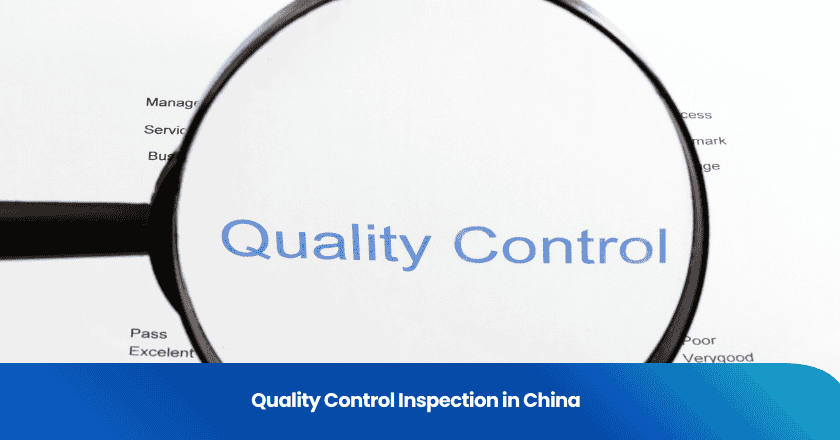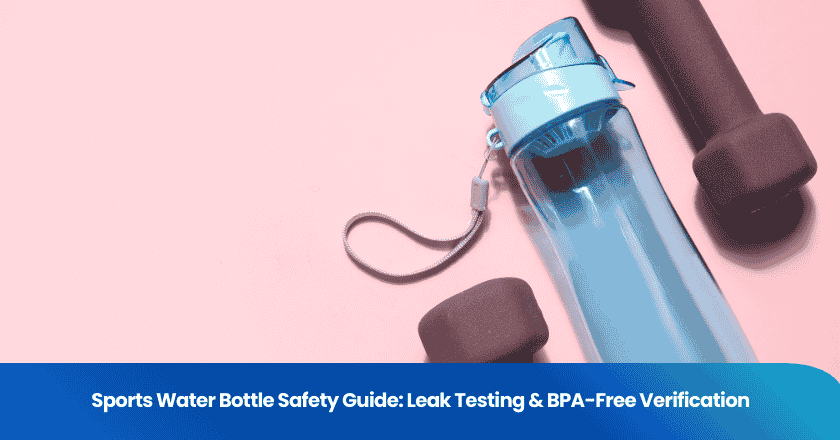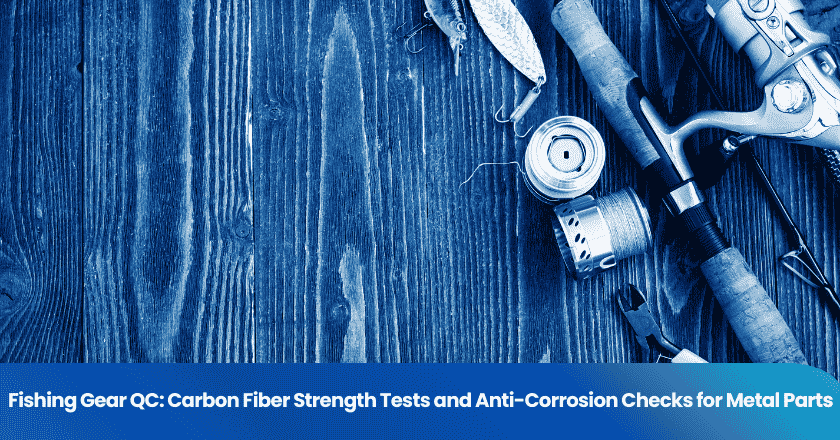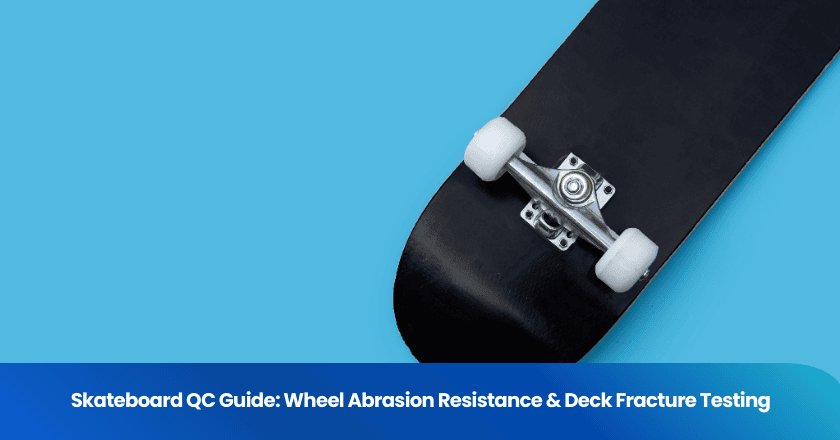
When you source products from China, you face many uncertainties. Quality control inspection in China helps you check if goods meet your standards before shipment. Without this process, you risk receiving inconsistent products, facing production delays, or dealing with compliance problems. By understanding these risks, you can make smarter sourcing decisions and protect your business from costly mistakes.
Key Takeaways
- Quality control inspections in China help you catch product issues early and avoid costly mistakes before shipment.
- Inspections occur at key stages: before production, during production, pre-shipment, and container loading to ensure consistent quality.
- A clear checklist and good communication with inspectors and factories improve inspection accuracy and reduce risks.
- Choosing a reliable inspection partner with experience and transparency strengthens your supply chain and protects your business.
- Overcoming challenges like language barriers and factory cooperation builds trust and ensures honest, unbiased inspection results.
Why Quality Control Inspection in China Matters
Risks in Manufacturing
When you source products from China, you face several risks that can impact your business. Factories may not always follow your specifications. You might receive goods with inconsistent quality. Sometimes, materials do not match your requirements. Production delays can occur if the factory faces equipment problems or labor shortages. You may also encounter compliance issues if products do not meet international standards or safety regulations.
Note: Even a small defect or delay can disrupt your supply chain and damage your reputation with customers.
Common risks include:
- Inconsistent product quality: Factories may use different materials or processes from batch to batch.
- Production delays: Unexpected issues can slow down manufacturing and cause late shipments.
- Compliance problems: Products may fail to meet safety, labeling, or environmental standards.
- Miscommunication: Language barriers and unclear instructions can lead to mistakes in production.
Benefits for Importers
You can reduce these risks by using quality control inspection in china. Inspections give you a clear view of what is happening at the factory. Inspectors check products at different stages of production. They compare finished goods to your requirements and industry standards. This process helps you catch problems early.
Here are some key benefits:
- Protect your investment: Inspections help you avoid paying for defective or non-compliant goods.
- Build trust with customers: Consistent quality leads to fewer returns and complaints.
- Save time and money: Early detection of issues prevents costly rework or shipment delays.
- Ensure compliance: Inspections verify that products meet all necessary regulations.
By making inspections a regular part of your sourcing process, you strengthen your supply chain and protect your business interests.
Types of Quality Control Inspections
Quality control inspection in china involves several stages. Each stage targets specific risks and helps you maintain product standards throughout the supply chain.
Pre-Production
You start with pre-production inspections. Inspectors check raw materials and components before manufacturing begins. They verify that suppliers use the correct materials and follow your specifications. This step helps you prevent problems before production starts.
- Inspectors review material quality.
- They confirm quantities and specifications.
- You receive feedback on potential risks.
Tip: Early inspections reduce the chance of costly mistakes later in the process.
During Production
During production inspections take place when manufacturing is underway. You can catch defects early and monitor the factory’s progress. Inspectors select samples from the production line and compare them to your requirements.
- Inspectors check assembly methods.
- They look for process consistency.
- You get updates on production status.
This inspection helps you address issues before they affect the entire batch.
Pre-Shipment
Pre-shipment inspections happen when goods are ready for delivery. Inspectors examine finished products to ensure they meet your standards. You can verify product quality, packaging, and labeling before shipment.
- Inspectors test product functions.
- They check for visual defects.
- You confirm compliance with regulations.
Note: Pre-shipment inspections protect you from receiving unsellable goods.
Container Loading
Container loading inspections occur during the packing and loading phase. Inspectors oversee the loading process to ensure correct quantities and proper handling. You can avoid shipping errors and damage.
- Inspectors count cartons and check packaging.
- They monitor container conditions.
- You receive assurance that goods ship safely.
Each inspection type plays a vital role in your supply chain. You gain control over product quality and reduce risks at every stage.
Quality Control Inspection in China Process
A successful quality control inspection in China follows a clear, step-by-step process. You need to plan carefully, execute inspections on-site, and review detailed reports. Each stage helps you catch problems early and maintain high product standards.
Preparation
Preparation sets the foundation for a smooth inspection. You start by defining your product requirements and quality standards. You create a detailed checklist that covers all critical aspects of your product, such as dimensions, materials, functions, and packaging. This checklist guides inspectors and ensures they focus on what matters most to your business.
You also decide on the inspection type and timing. For example, you may choose a pre-shipment inspection if you want to verify finished goods before delivery. You communicate your expectations clearly to the inspection team and the factory. Good preparation reduces misunderstandings and helps you avoid costly mistakes.
Typical preparation activities include:
- Reviewing product specifications and drawings
- Creating a customized inspection checklist
- Setting inspection criteria and acceptable quality limits
- Scheduling the inspection date with the factory
- Sharing requirements with all parties involved
Tip: A well-prepared checklist acts as your eyes and ears in the factory. It helps inspectors focus on your priorities.
On-Site Steps
On-site inspection is the core of the process. Inspectors visit the factory and follow your checklist step by step. They select random samples from the production batch to ensure unbiased results. Sampling follows international standards, such as the Acceptable Quality Limit (AQL), to provide a fair assessment.
Inspectors examine the products for visual defects, measure key dimensions, and test functions. They check packaging, labeling, and any special requirements you have set. If they find defects, they classify them as minor, major, or critical. This classification helps you decide if the batch meets your standards or needs rework.
Key on-site activities:
- Random sampling of finished or in-process goods
- Visual inspection for defects and workmanship
- Functional and safety testing
- Measurement of product dimensions
- Verification of packaging and labeling
- Taking photos and documenting findings
Note: Inspectors act as your representatives on the factory floor. Their observations give you a real-time view of production quality.
Reporting
After the on-site inspection, you receive a detailed report. This report summarizes the findings, highlights any defects, and provides clear recommendations. You see photos, measurements, and test results for each checkpoint on your checklist. The report also includes a pass or fail result based on your criteria.
You review the report and decide on the next steps. If the inspection passes, you can approve shipment with confidence. If inspectors find serious issues, you can request rework or negotiate with the supplier. Timely and accurate reporting helps you make informed decisions and protect your business interests.
A typical inspection report includes:
| Section | Details Provided |
|---|---|
| Product Overview | Description, quantity, and specifications |
| Sampling Details | Number of units inspected, sampling method |
| Defect Summary | List and classification of defects |
| Test Results | Measurements, function, and safety tests |
| Photos | Visual evidence of findings |
| Recommendations | Pass/fail status and suggested actions |
Remember: A clear inspection report is your main tool for quality assurance. It helps you communicate with suppliers and resolve issues quickly.
By following this structured process, you gain control over your supply chain. You reduce risks, ensure compliance, and deliver consistent quality to your customers.
Standards and Checkpoints
Main Standards
You need to understand the main standards that guide inspections in China. Inspectors use international benchmarks to evaluate products. These standards help you ensure safety, reliability, and compliance. Some of the most common standards include:
- ISO 9001: Sets requirements for quality management systems.
- CE Marking: Indicates conformity with European health, safety, and environmental protection standards.
- RoHS: Restricts hazardous substances in electrical and electronic equipment.
- ASTM: Provides guidelines for material and product testing.
- GB Standards: Represents Chinese national standards for various products.
Inspectors check if your products meet these standards. They review documentation, test samples, and verify labeling. You gain confidence that your goods comply with regulations in your target market.
Common Defects
You must watch for common defects during inspections. These issues can affect product performance and customer satisfaction. Inspectors identify defects by examining samples and running tests. Here are some frequent problems:
| Defect Type | Example | Identification Method |
|---|---|---|
| Visual | Scratches, dents, color mismatch | Visual inspection |
| Functional | Malfunction, poor assembly | Function testing |
| Dimensional | Incorrect size, uneven parts | Measurement tools |
| Packaging | Damaged boxes, wrong labels | Packaging review |
Inspectors classify defects as minor, major, or critical. You use this information to decide if you should accept, reject, or request rework for the batch.
Tip: Early detection of defects saves you time and money. You avoid costly returns and protect your reputation.
Inspector Focus
You want inspectors to focus on the most important checkpoints. They follow your checklist and industry standards. Key areas of attention include:
- Product appearance and workmanship
- Functionality and safety
- Dimensions and tolerances
- Packaging integrity
- Labeling accuracy
- Compliance with regulations
Inspectors document their findings with photos and detailed notes. You receive clear feedback that helps you make informed decisions. By setting clear checkpoints, you improve the effectiveness of quality control inspection in china.
Choosing an Inspection Partner
What to Look For
You need to select an inspection partner who understands your product and industry. Look for agents with proven experience in your product category. You want inspectors who communicate clearly and provide detailed reports. Reliable partners follow international standards and use structured checklists. They should offer transparency in their inspection process and share sample reports for review.
Consider these factors when evaluating candidates:
- Experience with your product type
- Knowledge of relevant standards and regulations
- Clear communication skills
- Ability to provide sample inspection reports
- Transparent pricing and service terms
Tip: Ask for references from previous clients to verify reliability and professionalism.
Questions to Ask
You should ask direct questions to assess the capabilities of potential inspection partners. Prepare a list before your meeting. This approach helps you compare options and make an informed decision.
| Question | Why It Matters |
|---|---|
| What is your inspection process? | Ensures structured and thorough checks |
| How do you select samples? | Confirms unbiased and fair assessment |
| What standards do you follow? | Verifies compliance with regulations |
| How do you report findings? | Assures clarity and actionable results |
| Can you handle urgent requests? | Tests flexibility and responsiveness |
You gain confidence when you receive clear, direct answers.
Avoiding Issues
You can avoid common problems by setting clear expectations from the start. Share your product requirements and inspection criteria in writing. Confirm the inspection schedule and reporting format. Maintain open communication with your inspection partner and the factory. Address any concerns immediately to prevent misunderstandings.
- Provide detailed checklists and specifications
- Confirm timelines and deliverables
- Request regular updates during the inspection process
- Review reports promptly and follow up on issues
Note: A proactive approach helps you minimize risks and ensures a smooth quality control inspection in china experience.
Challenges and Solutions
Communication
You may face communication barriers when working with factories in China. Language differences and cultural misunderstandings can lead to mistakes in your orders or inspection requirements. If you do not express your expectations clearly, the factory may misinterpret your instructions.
- Use simple, direct language in all documents.
- Provide visual aids, such as diagrams or photos, to clarify your requirements.
- Hire a bilingual coordinator or interpreter to bridge language gaps.
- Confirm understanding by asking the factory to repeat your instructions in their own words.
Tip: Written checklists and clear specifications help prevent miscommunication.
Factory Cooperation
Sometimes, factories may resist inspections or limit access to certain areas. They might worry about production delays or fear negative reports. This resistance can make it hard for you to verify product quality.
- Schedule inspections in advance and inform the factory about the process.
- Explain the benefits of inspections for both parties, such as fewer returns and better business relationships.
- Build trust by maintaining regular contact and showing respect for factory procedures.
- Address concerns openly and work together to solve problems.
Note: Cooperation improves when you treat the factory as a partner, not just a supplier.
Inspector Integrity
You rely on inspectors to provide honest, unbiased reports. However, conflicts of interest or external pressures can affect their judgment. If you cannot trust the inspection results, your entire quality control process is at risk.
- Select inspectors with a strong reputation for professionalism.
- Rotate inspectors to reduce the risk of bias or undue influence.
- Review inspection reports carefully and request supporting evidence, such as photos and test results.
- Set clear ethical guidelines and monitor compliance.
Remember: Regular oversight and transparency help ensure reliable inspection outcomes.
Quality control inspection in china gives you the confidence to source products safely and efficiently. When you understand inspection types and processes, you make better decisions and protect your business from costly mistakes. Take action by creating a detailed inspection checklist or consulting with industry experts. You can minimize risks and deliver consistent quality to your customers.
FAQ
What is the best time to schedule a quality control inspection in China?
You should schedule inspections at key stages: before production, during production, before shipment, and during container loading. This approach helps you catch issues early and ensures consistent product quality.
How do inspectors select product samples for inspection?
Inspectors use random sampling methods based on international standards like AQL. This process ensures a fair and unbiased assessment of your batch, giving you a reliable overview of product quality.
What happens if inspectors find defects during the inspection?
If inspectors find defects, you receive a detailed report. You can request rework, negotiate with the supplier, or reject the batch. This process helps you avoid costly mistakes and protect your business.
Do you need to be present during the inspection?
You do not need to be present. Professional inspectors act as your representatives. They follow your checklist, document findings, and send you a comprehensive report with photos and recommendations.
Grow your business with TradeAider Service
Click the button below to directly enter the TradeAider Service System. The simple steps from booking and payment to receiving reports are easy to operate.



